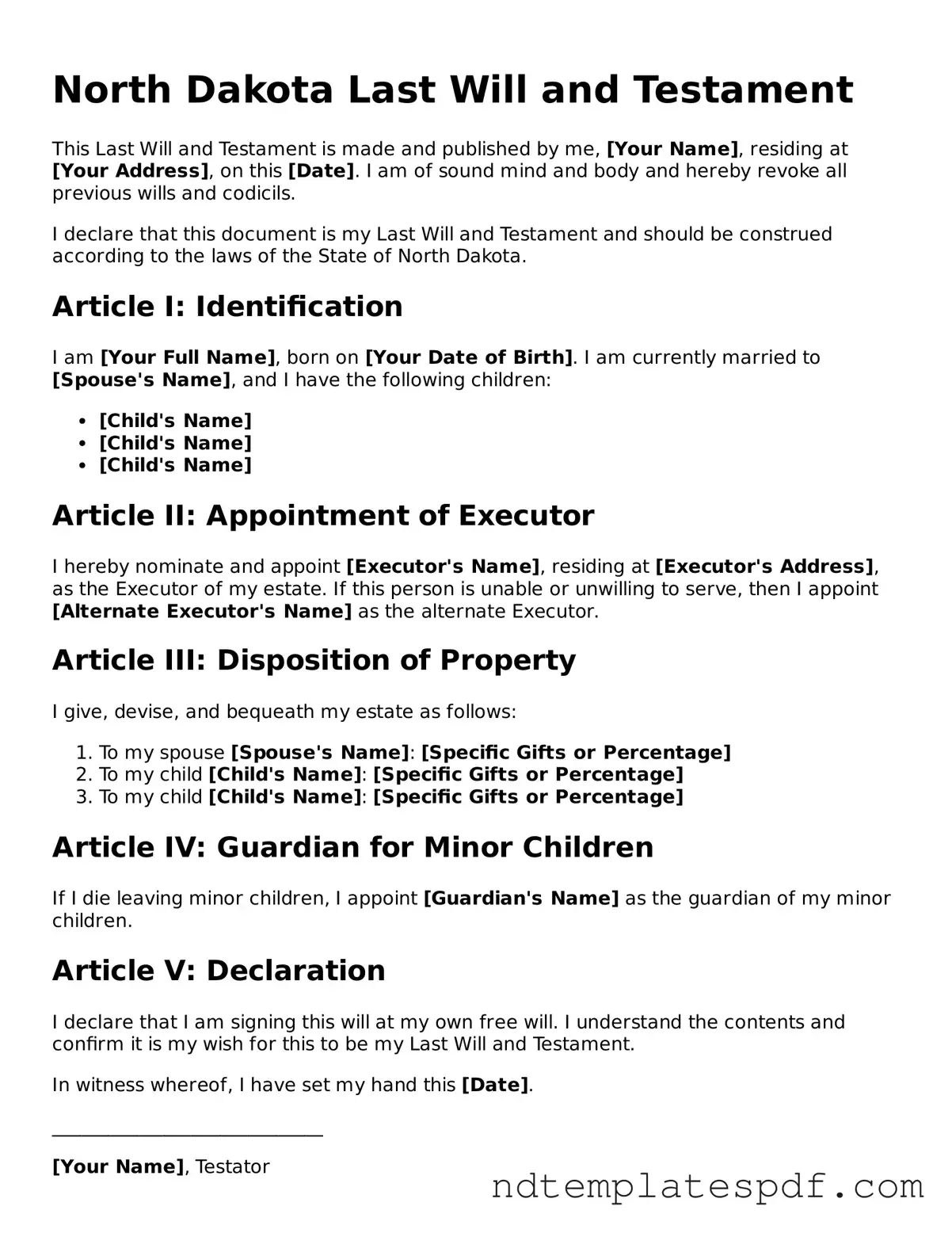Detailed Steps for Using North Dakota Last Will and Testament
Completing the North Dakota Last Will and Testament form is an important step in ensuring that your wishes are carried out after your passing. By following the steps outlined below, you can fill out the form accurately and effectively, paving the way for a smoother process for your loved ones in the future.
- Obtain the Form: Start by acquiring the North Dakota Last Will and Testament form. This can typically be found online through state resources or legal websites.
- Provide Your Information: Fill in your full name, address, and date of birth at the top of the form. Ensure that this information is accurate, as it identifies you as the testator.
- Declare Your Intent: Clearly state that this document is your Last Will and Testament. This can usually be done by writing a sentence to that effect at the beginning of the form.
- List Your Beneficiaries: Identify the individuals or organizations you wish to inherit your assets. Include their full names and relationship to you for clarity.
- Appoint an Executor: Designate a trusted person to carry out the terms of your will. Provide their name and contact information, as they will be responsible for managing your estate.
- Detail Your Assets: Outline your assets, including property, bank accounts, and personal belongings. Be as specific as possible to avoid confusion later.
- Include Special Instructions: If there are any specific wishes regarding your funeral, burial, or distribution of personal items, include those details in this section.
- Sign the Document: Once you have completed the form, sign it in the presence of witnesses. North Dakota typically requires at least two witnesses to validate your will.
- Have Witnesses Sign: Your witnesses should also sign the document, confirming that they witnessed your signature and that you were of sound mind when signing.
- Store the Will Safely: After completing the form, keep the original document in a safe place. Inform your executor and loved ones about its location.
